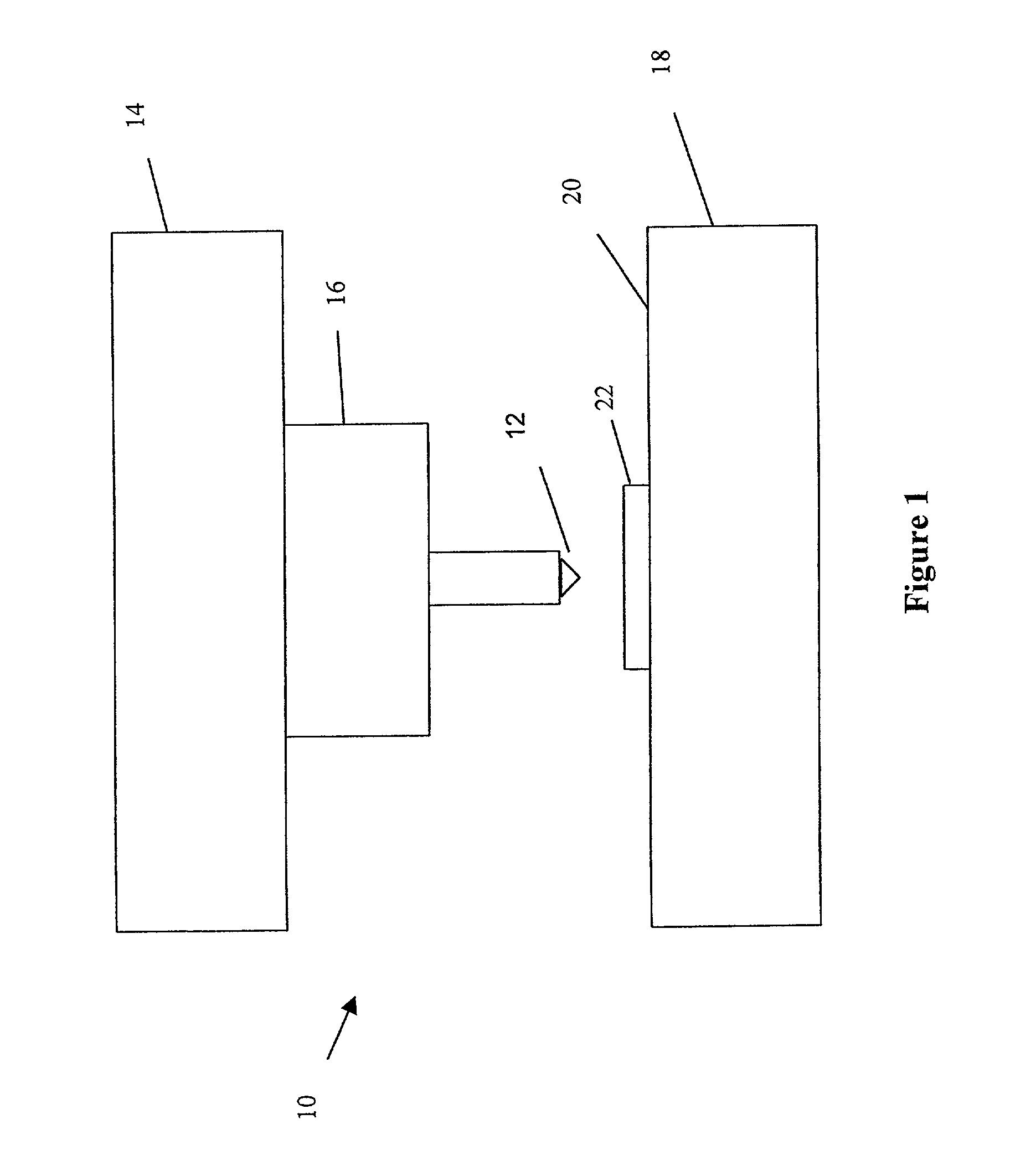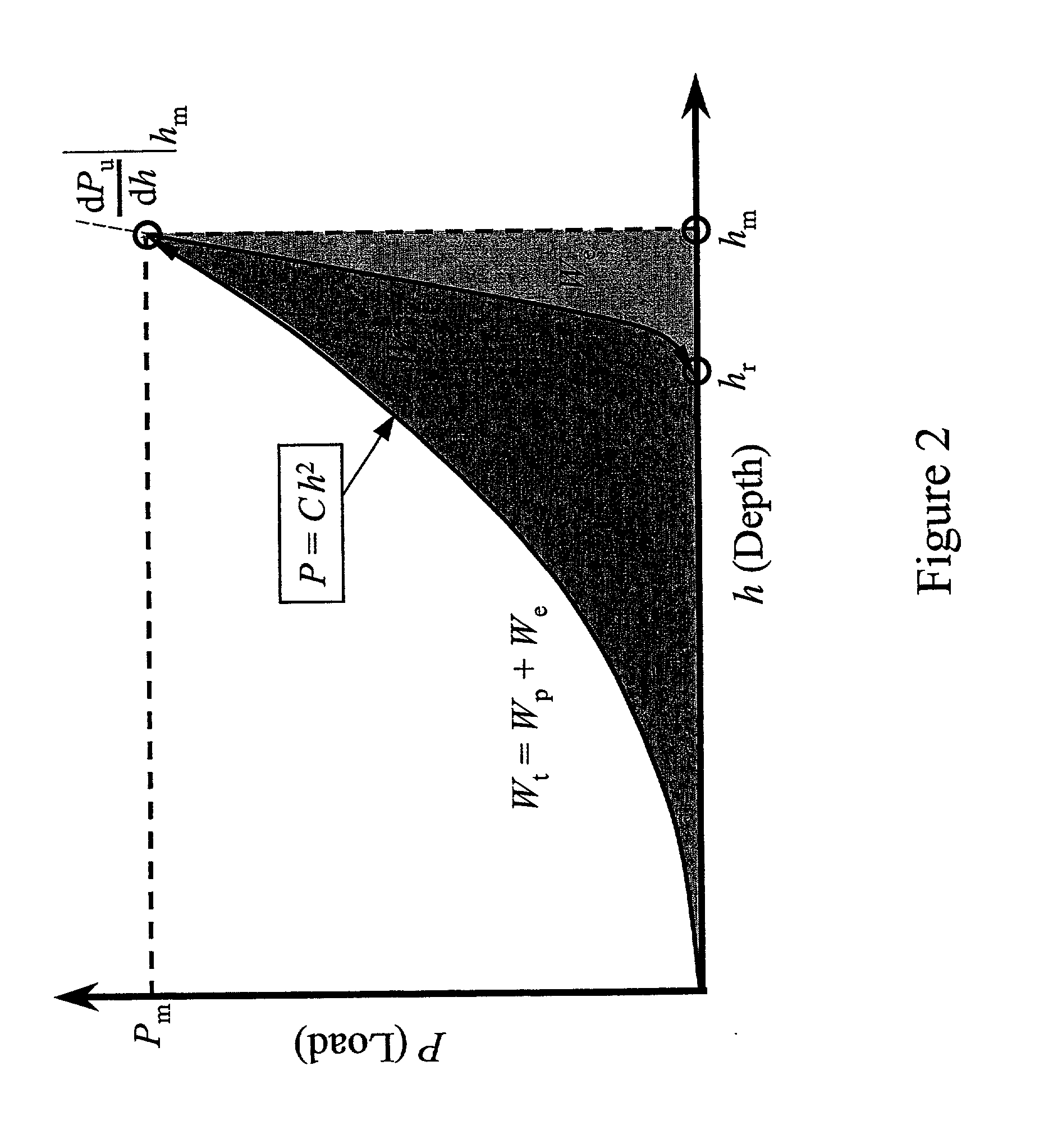Systems and methods for estimation and analysis of mechanical property data associated with indentation testing
a technology of indentation testing and mechanical property data, applied in the direction of force measurement, force measurement apparatus, instruments, etc., can solve the problems of large errors, difficult experimentally obtained, and general poor suitability of prior art methods for determining plastic properties
- Summary
- Abstract
- Description
- Claims
- Application Information
AI Technical Summary
Problems solved by technology
Method used
Image
Examples
example 2
Predicting Indentation Behavior from Mechanical Property Values (Forward Algorithm)
[0207] To study the accuracy of the large deformation theory based algorithms provided by the invention, uniaxial compression and indentation experiments were conducted in two materials: 7075-T651 aluminum and 6061-T6511 aluminum. Values for E and .sigma..sub.y were obtained from the resulting experimental true stress-true total strain data. The value for .sigma..sub.0.033 was then determined from the true stress-true plastic strain data. Finally, a power law equation was fit to the true stress-true plastic strain data to estimate a value for n (see Table 3). The Poisson ratio v was not experimentally determined, and was assigned a typical value of 0.33 for aluminum alloys. The parameters E.sub.i and v.sub.i were assigned values of 1100 GPa and 0.07, respectively; these are typical values for diamond taken from the literature (MatWeb:http: / / www.matweb.com / , 2001, by Automation Creations, Inc.). Microh...
example 3
Estimating Mechanical Property Values from Indentation Testing Data (Reverse Algorithm)
[0212] To study the reverse analysis algorithms, twelve experimental P-h data sets (six from 6061-T6511 aluminum specimens and six from 7075-T651 aluminum specimens) shown in Table 4 were analyzed to estimate elasto-plastic mechanical properties of the indented specimens. Results are shown in Tables 5(a) and 5(b). From Table 5(a) and 5(b), it can be seen that the inventive reverse algorithms yielded accurate estimates of E and .sigma..sub.0.033, and gave reasonable estimates of .sigma..sub.y (especially after taking an average from the six indentation results) which agree well with experimental compression data. It is noted that changing the definition of .sigma..sub.y to 0.1% or 0.2% (instead of 0%) offset strain did not affect the conclusions. The average pressure p.sub.ave also compares well with values estimated from experimental microhardness tests. The fractional errors observed in obtaining...
example 4
Reverse Algorithm without Calculating Area
[0216] Twelve experimental P-h curves (six from 6061-T6511 aluminum specimens and six from 7075-T651 aluminum specimens) were analyzed to estimate elasto-plastic properties of the indented specimens using the algorithm shown in FIG. 14. FIGS. 23 and 24 compare the results of the analysis to four other method of estimating E* from indentation test data. From FIGS. 23 and 24, it can be seen that the estimated values of E* are in good agreement with the actual values of E*.
PUM
| Property | Measurement | Unit |
|---|---|---|
| apex angle | aaaaa | aaaaa |
| yield strength | aaaaa | aaaaa |
| yield strength | aaaaa | aaaaa |
Abstract
Description
Claims
Application Information
 Login to View More
Login to View More - R&D
- Intellectual Property
- Life Sciences
- Materials
- Tech Scout
- Unparalleled Data Quality
- Higher Quality Content
- 60% Fewer Hallucinations
Browse by: Latest US Patents, China's latest patents, Technical Efficacy Thesaurus, Application Domain, Technology Topic, Popular Technical Reports.
© 2025 PatSnap. All rights reserved.Legal|Privacy policy|Modern Slavery Act Transparency Statement|Sitemap|About US| Contact US: help@patsnap.com



